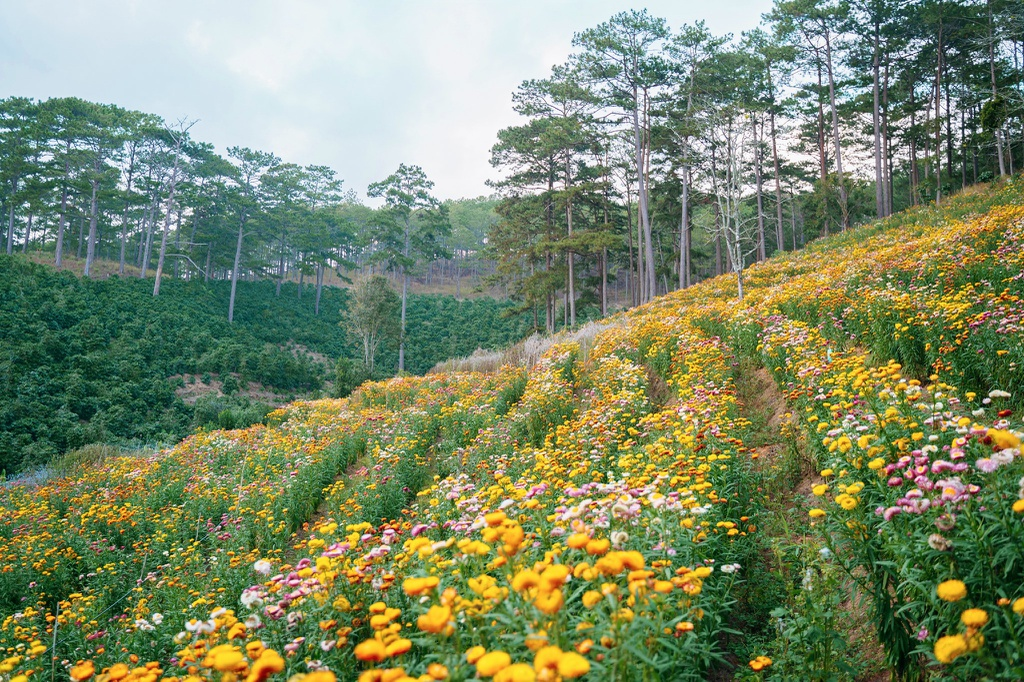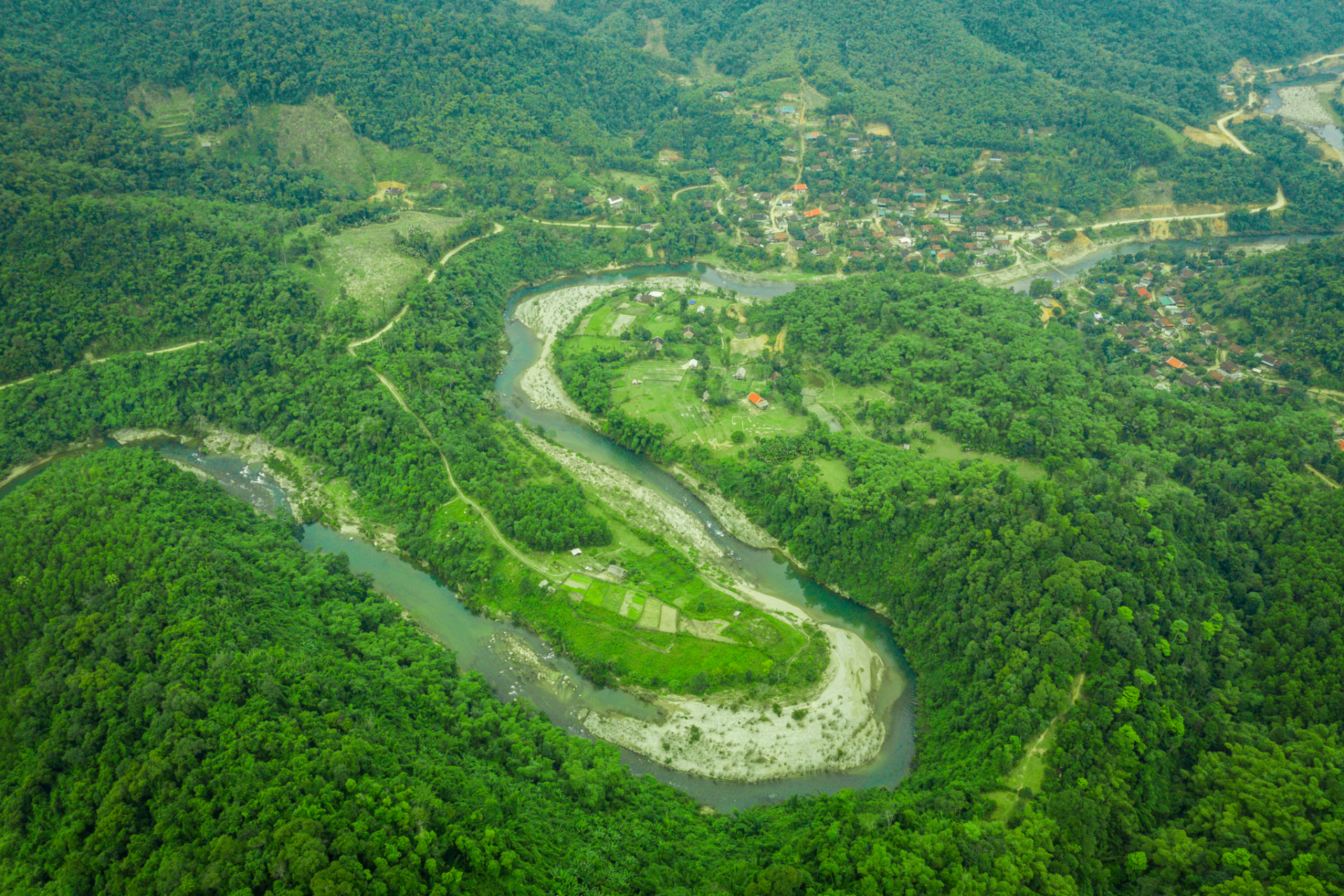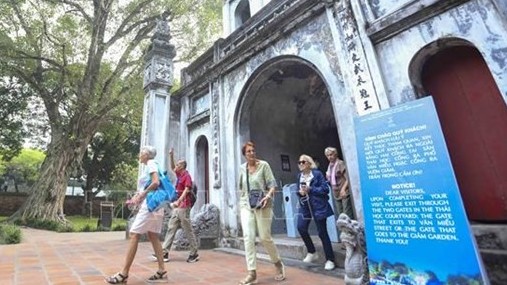Hai Van Pass - one of the most scenic hillside roads in Vietnam
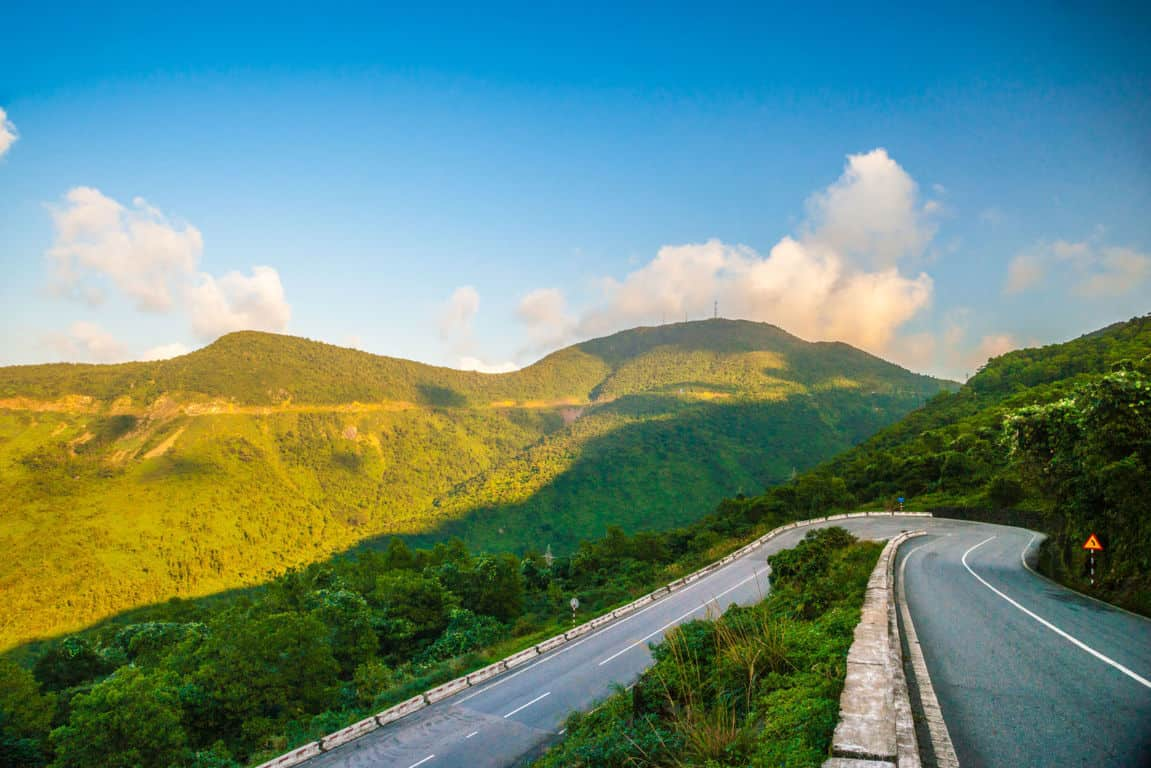 |
| Whenever one goes through Hai Van Pass, two feelings are experienced: amazement at passing through the clouds and fear when seeing the dangerous bends of the road. (Photo: Vietnam Discovery) |
On the north – south nation highway, Hai Van Pass is an impressive landscape. It is like a giant dragon, lying on Highway 1 on the border between Thua Thien-Hue Province and Danang City. This is the highest pass in Vietnam (500m above sea level). This rugged pass is the final section of the Truong Son Range stretching to the sea. Hai Van means “Sea Clouds”, since the peak of the mountain is in the clouds while its foot is close to the sea. In the past, Hai Van Pass was known as the Thuan Hoa and Quang Nam frontier.
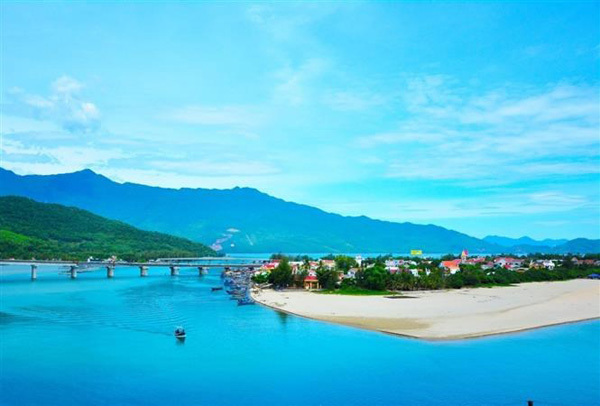 |
| Tourists can discover Hai Van pass by car, motorbike or even train, but the most fun is by motorbike. (Photo: VNA) |
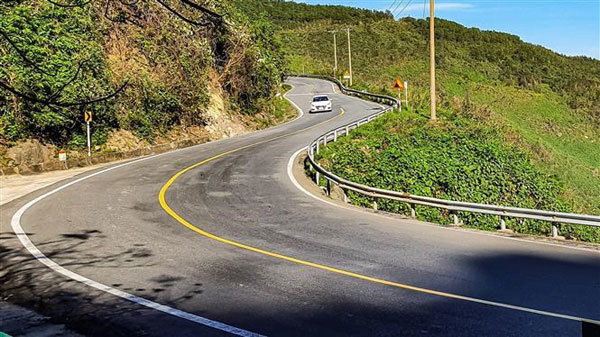 |
| Hai Van Pass is known for its sections winding around high mountain slopes with deep ravines and the blue sea on one side. (Photo: VNA) |
In the early 14th century (1306), Che Man, a king from Cham Pa, offered two mountainous administrative units of O and Ri as engagement gifts to Princess Huyen Tran, daughter of King Tran Nhan Tong. Since then, Hai Van Pass has acted as the physical boundary between Dai Viet and Cham Pa. Until now, on top of the pass, you can still see the ancient grand gate which used to be one of the border crossings between two kingdoms. During the Vietnamese-American War, people called Hai Van Pass the ‘Street Without Joy’ since it connected Hue and Da Nang – the most significantly war-ravaged cities at the time.
Whenever one goes through Hai Van Pass, two feelings are experienced: amazement at passing through the clouds and fear when seeing the dangerous bends of the road. After climbing through several hair-pin curves for close to an hour, you reach the crest of the Hai Van Pass.
Here, if the weather affords it (which it often doesn’t), there are views to both the North and the South. The pass forms an obvious boundary between North and South Vietnam, and if proof were needed, you need look no further than the fortifications built by the French and then later used by the South Vietnamese and the Americans. You will of course want to stop here if you make this trip, but be warned that you will have to fight off a large band of souvenir and snack sellers who are among the most aggressive I encountered during the whole trip.
With sudden curves and blind corners, Hai Van Pass is likened to an arrogant but beautiful girl challenging drivers’ skills. Hai Van is considered to be the largest frontier post in Vietnam. The name “De Nhat Hung Quan”, meaning the most colossal frontier post, is engraved on an incense burner in Thai Temple.
On a journey through the land, Hai Van is always an attractive landscape, full of perilous obstacles and is the last spur of the Truong Son Range reaching to the sea. On the top of the pass are the vestiges of an old fortified gateway. The gate facing to Thua Thien-Hue Province is inscribed with the three words “Hai Van Quan” and the other gate looking down on Quang Nam province is engraved “the most grandiose gateway in the world”.
The entrance to Hai Van Quan looks like the entrance to an old citadel with its stone structures. Time, war, and neglect has taken its toll on Hai Van Quan, as it sits today in near ruins. The old story is only a memory, old vestiges covered with green moss, among vast spaces vast of plants and trees, tourists are filled with the emotions of the past.
The most impressive about the journey is the sense of isolation you feel as you move further along. There is a strange delight about the desolate conditions, a seemingly unbroken asphalt road that cuts through a mass of forest. Below you, the green trees contrast with the breaking waves in the blue sea. And herein lies the beauty of Hai Van. While many rave about the charm of the Bao Loc mountain pass, the road is crowded with people and villages nestled along the way. But just as civilisation characterises the allure of Bao Loc, Hai Van’s beauty is closely connected to nature and its lack of population.
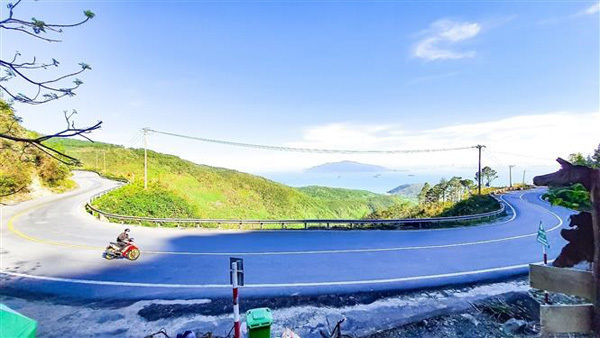 |
| The zigzagging paths around mountain slopes. (Photo: VNA) |
Lining the peak of the mountain is the immense abyss dotted with the light and dark green colours of the trees. The scene is capped off with fanciful clouds flying across the sky. The area is a perfect place to have a cup of coffee and contemplate the scene, looking over Hai Van as if from the heavens as the trees blow with the wind.
Hai Van is well known for its dangerous roads, and accident warning boards carefully appear regularly along the side. It’s a surprising sight to see the animation and modernity at the peak as foreign visitors buzzed about buying souvenirs. Those who do not make it to the peak would have a hard time believing there was such a busy trading and modern scene, as foreign women made their way up the rough staircase at the Hai Van Quan ancient vestige to take photos.
Hai Van Pass will satisfy your desire to conquer high peaks and remind you of the glorious past of the Viet people. Moreover, from the pass, on nice days, visitors can enjoy the whole vista of Danang, the Tien Sa seaport, Son Tra Peninsula, Cu Lao Cham Island and long sandy beaches.
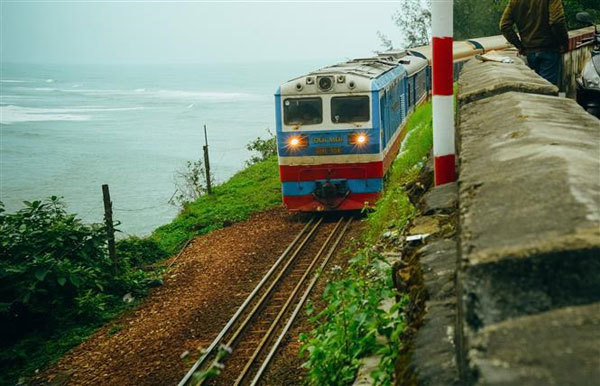 |
| A railway crosses the Hai Van Pass. (Photo: VNA) |
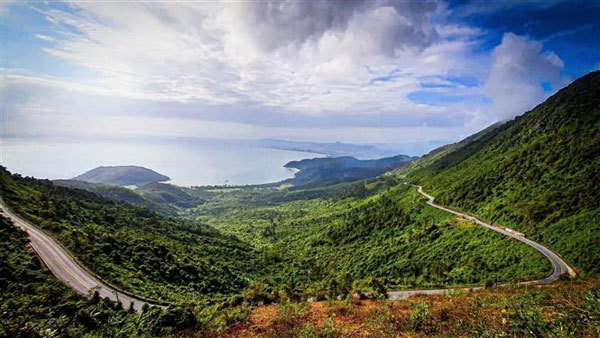 |
| Hai Van signifies 'Sea Cloud' because the peak of the mountain is in the clouds, whereas its foot is close to the sea. (Photo: VNA) |
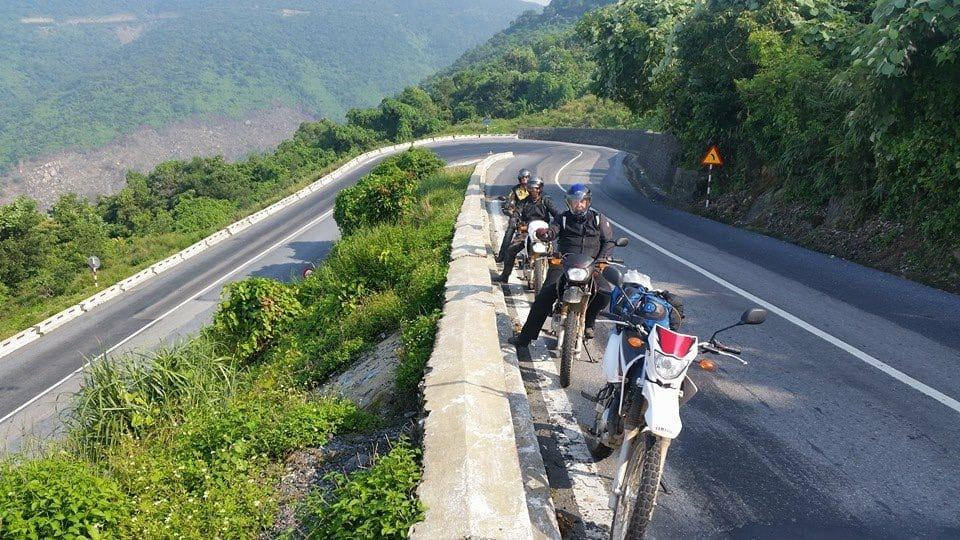 |
| Riding a motorbike along Hai Van pass would be the best experience (Photo: Vietnam discovery) |
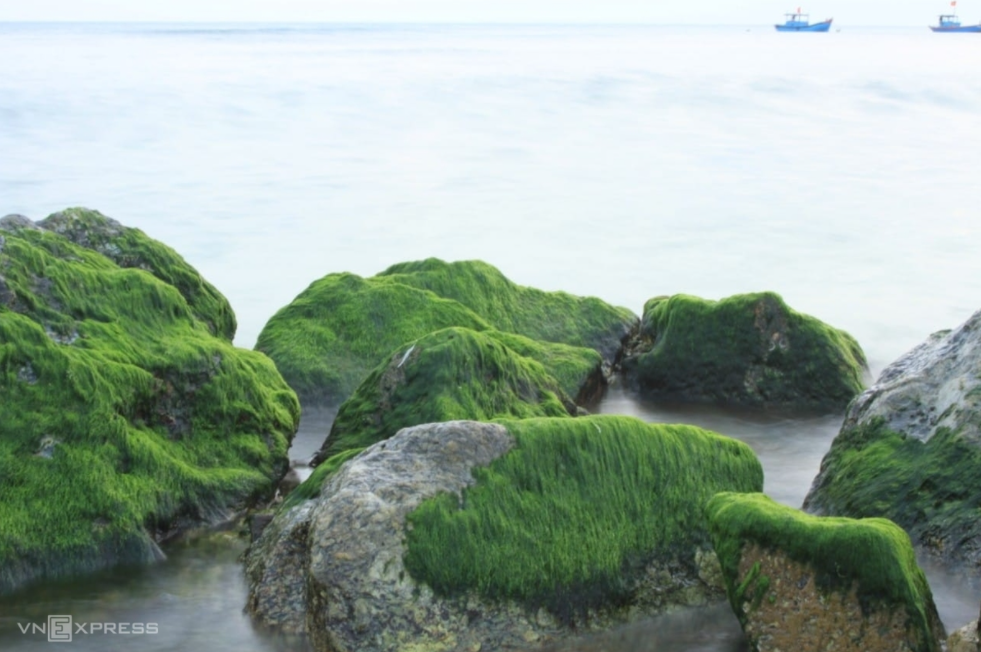 | From late December to April, the rocky beaches of Ly Son Island are covered with green mosses hidden in the waves that crash the rocky ... |
 | Hoi An buffalo tours - Unique and amazing experience for foreigners Hoi An is an exciting place for tourists to relax and have fun, and it also offers many refreshing experiences that they have never had ... |
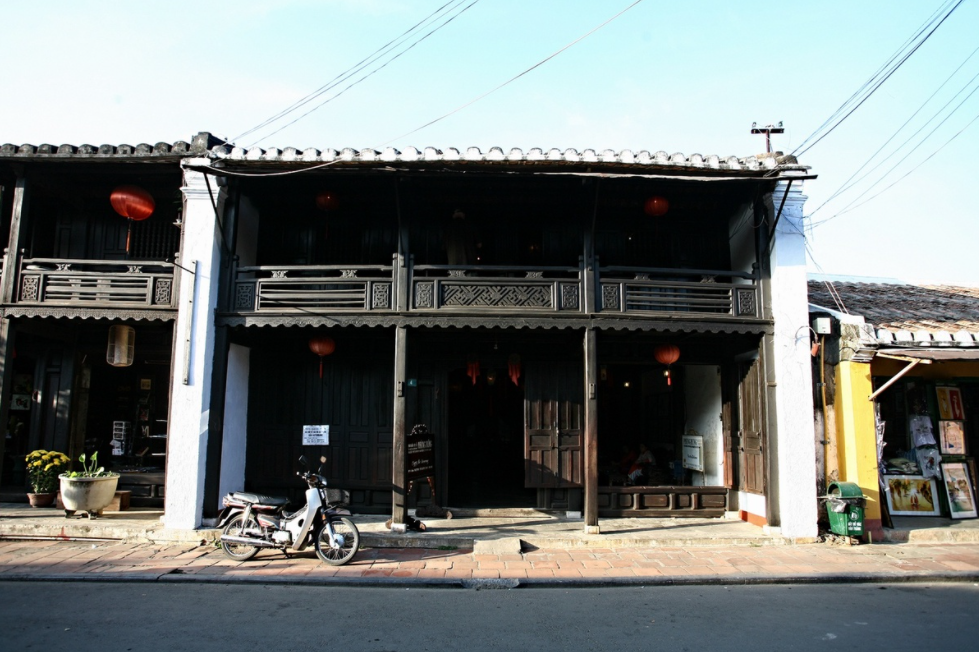 | Inside an 240-year-old house of Hoi An The old Phung Hung house, built in 1780, still preserves its original status and has recently become an attractive destination for tourists. |
Recommended
 Travel
Travel
Strategies for Sustainable Growth of Vietnam’s Tourism from International Markets
 Travel
Travel
Vietnam Strengthens Its Presence On The Global Tourism Map
 Multimedia
Multimedia
Phong Nha-Ke Bang National Park Named Top Adventure Travel Site
 Travel
Travel
Luxury Train From Hanoi To Hai Phong To Be Launched In May
 Travel
Travel
Phong Nha Named Top Budget-Friendly Travel Destination for Spring 2025: Agoda
 Travel
Travel
Four Indian Films Introduced to Lao Cai Audience
 Travel
Travel
Vietnam to Waive Visas for Citizens from 12 Countries until 2028
 Travel
Travel


